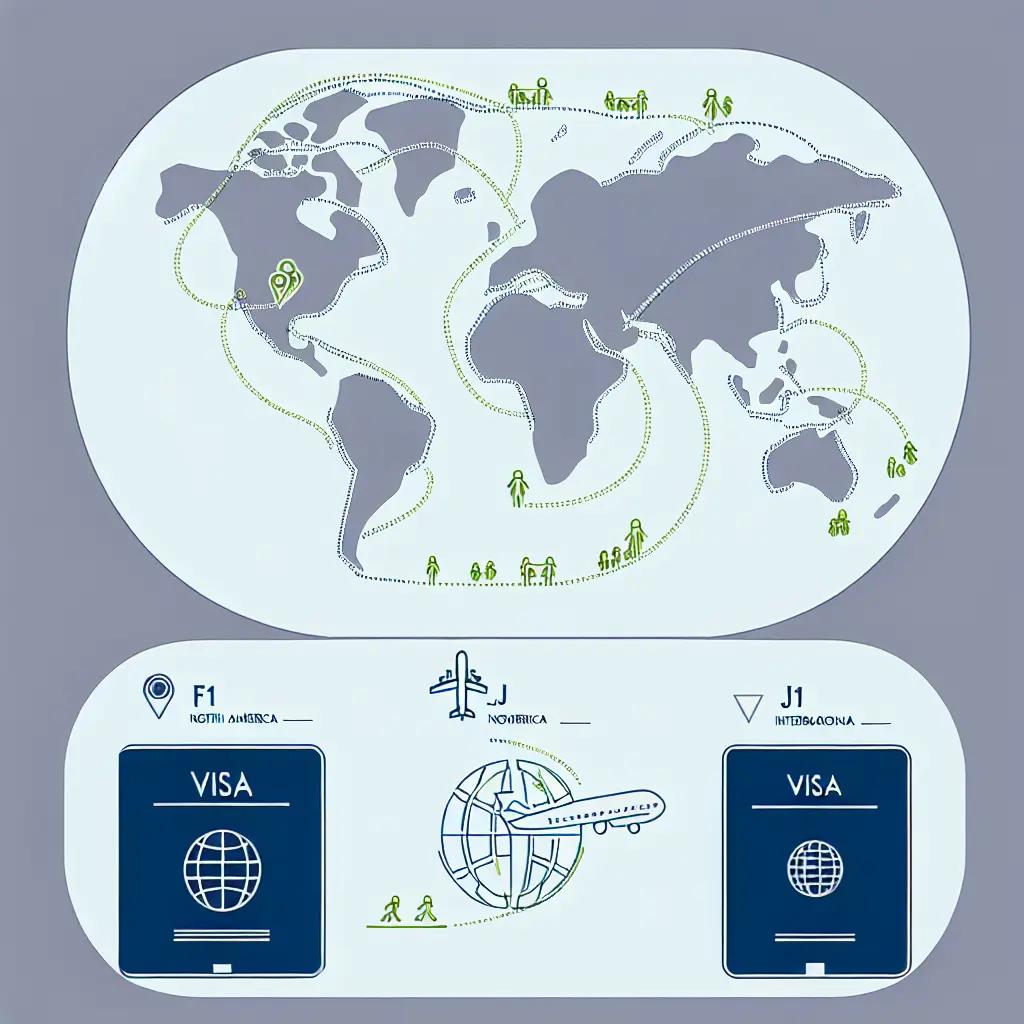F1 and J1 Student Visas - Key Differences

Introduction
The F1 and J1 student visas are two prominent nonimmigrant visa categories in the United States, designed for international students and exchange visitors respectively. Navigating the legal framework, policy implications, and practical impacts of these visas is crucial for individuals seeking to study or participate in exchange programs in the U.S.
Eligibility Criteria
F1 Visa
The F1 visa is intended for academic students who wish to pursue full-time studies at USCIS-approved educational institutions in the United States. To be eligible, applicants must be admitted to a U.S. educational institution, obtain an I-20 form, demonstrate sufficient financial resources, and have a genuine intention to return to their home country after completing their studies.
J1 Visa
The J1 visa is designed for participants in exchange programs authorized by the U.S. Department of State. This includes professional training, internships, and academic exchange programs. Applicants must adhere to the specific requirements of their exchange program, which may include a two-year home country physical presence requirement after the program concludes.
Legal Framework
Both F1 and J1 visas are governed by the Immigration and Nationality Act (INA) and regulations set forth by the U.S. Department of State and the Department of Homeland Security (DHS).
- **F1 Visa**: The F1 visa is regulated under 8 U.S.C. § 1101(a)(15)(F) and 8 CFR § 214.2(f), which outline the requirements for academic students.
- **J1 Visa**: The J1 visa falls under 8 U.S.C. § 1101(a)(15)(J) and 22 CFR § 62, which detail the conditions for exchange visitors.
Policy Implications
Educational Exchange
The F1 visa promotes educational exchange by allowing foreign students to enroll in U.S. academic programs, contributing to the diversity and quality of the U.S. educational system. This aligns with U.S. policy goals of fostering international education and cultural exchange.
Professional and Cultural Exchange
The J1 visa facilitates professional and cultural exchange through various programs, including internships and professional training. This helps in building international relationships and exchanging skills and knowledge, which is a key aspect of U.S. foreign policy.
Practical Impact
Employment Opportunities
- **F1 Visa**: F1 visa holders are generally allowed to work on campus for up to 20 hours per week during the academic year and full-time during breaks. They may also apply for Optional Practical Training (OPT) after completing their studies, which allows them to work in their field of study for up to 12 months (or 36 months for STEM fields).
- **J1 Visa**: J1 visa holders are typically authorized to work only within the scope of their exchange program. However, some categories, such as interns and trainees, may be allowed to work off-site as part of their program.
Duration of Stay
- **F1 Visa**: The duration of stay for F1 visa holders is determined by the completion of their academic program plus any authorized practical training.
- **J1 Visa**: The duration of stay for J1 visa holders is specified by the exchange program, which can vary from a few months to several years, depending on the program's requirements.
Home Country Physical Presence Requirement
J1 visa holders may be subject to a two-year home country physical presence requirement, which means they must return to their home country for at least two years before they can apply for certain types of visas, including immigrant visas or other nonimmigrant visas such as H or L visas. This requirement does not apply to F1 visa holders.
Compliance and Enforcement
Both F1 and J1 visa holders must comply with the terms of their visa, including maintaining full-time enrollment (for F1) or adhering to the exchange program (for J1). Failure to comply can result in visa revocation and potential deportation. The Student and Exchange Visitor Information System (SEVIS) closely monitors compliance through the Student and Exchange Visitor Program (SEVP) and the Department of State.
Conclusion
The F1 and J1 visas serve distinct purposes within the U.S. immigration system, each with its own set of eligibility criteria, legal framework, and practical implications. Understanding these differences is crucial for applicants, educational institutions, and exchange program sponsors to ensure compliance and maximize the benefits of these visa categories. The policies surrounding these visas reflect broader U.S. goals of promoting educational and cultural exchange while maintaining national security and immigration control.